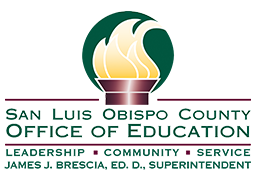Teachers Anticipating Unfinished Learning Part 2
That was some cliffhanger, wasn’t it!? Seriously, what did those students from 4th grade remember from 3rd grade about Fractions and Area? If you have no idea what I’m referring to, here is the blog post about Teachers Anticipating Unfinished Learning, (see you back here in a few minutes, we’ll wait!)
As a group, we were able to meet back together for a full day of math collaboration 5 weeks after our initial meeting. Let me tell you, these teachers were ready to share and discuss and learn! We started off by debriefing the task that we chose to give at the last collaboration day. (In case you forgot, the task was halves, thirds and sixths.) We had three classes of student work to analyze. The first sort was of each class by a “not yet”, “almost”, and “there” category. There was no scientific methodology involved here, as we were just trying to get an idea of where the class did as a whole. From here, we began to look at each group and examine the work closely. What we found was that there were still some areas of unfinished learning in regards to:
- Part/Whole vs. Part/Part
- Equivalent Fractions
Let’s take a gander at the Part/Whole vs. Part/Part scenario.

What fraction of the area of each rectangle is shaded blue? Name the fraction in as many ways as you can. Explain your answers.
One of the more common incorrect responses we saw was 1/5 . So, we needed to find out what the standards really said. Referring to the 3rd grade standards, 3.NF.1 from the domain Number and Operations – Fractions, students understand a fraction 1/b as the quantity formed by 1 part when a whole is portioned into b equal parts and the fraction a/b as the quantity formed by a parts of size 1/b .
Upon reviewing the student work, we found that many of the students did not associate the whole as the rectangle. They instead compared the shaded to the non-shaded squares within the rectangle. Recognizing the whole is one of the key factors of student understanding of fractions. Students using geometric representations as they partition the shapes into equal parts, allows them to make connections to the unit fraction as a unit, as well as the concept of area.
After we studied these two standards, 3.NF.1 and 3.G.2, one thing that came up in conversation was the thought that geometry is always taught if time allows or after “testing”. The California Frameworks for Mathematics describes the Major, Additional and Supporting Clusters, as well as Achieve the Core’s Mathematics: Focus by Grade Level. Even though 3.G.1 – 2 are listed as Additional/Supporting Clusters, they are not to be ignored. One way to view these Additional/Supporting Clusters is an opportunity to allow access to the Major Clusters for all students through multiple representations or strategies.
 The teachers and I then set off on some research and exploring of activities that they could put into place to complete this unfinished learning for their students before they began to teach their grade level mathematics/standards. They designed a learning series that focuses on unit fractions and partitioning and recognizing fraction areas of geometric shapes. I’m waiting to hear how the teachers believe, and what data they have, that these lessons supported students in being able to access grade level instruction.
The teachers and I then set off on some research and exploring of activities that they could put into place to complete this unfinished learning for their students before they began to teach their grade level mathematics/standards. They designed a learning series that focuses on unit fractions and partitioning and recognizing fraction areas of geometric shapes. I’m waiting to hear how the teachers believe, and what data they have, that these lessons supported students in being able to access grade level instruction.
During these two days of collaboration, learning, designing and discussing, we walked away feeling empowered, excited and encouraged to assess students formatively, diagnose any unfinished learning, anticipate what misconceptions students may have, and be able to act on that formative data to support student learning.
Contact
- San Luis Obispo County Office of Education
- Office of James J. Brescia, Ed.D.
- 3350 Education Drive
- San Luis Obispo, CA 93405
- Tel: 805-543-7732
- Contact SLOCOE
- Contact Webmaster


